#Iris tectorum
Explore tagged Tumblr posts
Text

雨の降る日にお花好きな住宅の
駐車場傍の鉢植えで咲いていた、
紫色が鮮やかな「イチハツ(一初)」の花。
アヤメ属。
別名:コヤスグサ(子安草)、
トビオグサ(鳶尾草)、
スイラン(水蘭)。
学名:Iris tectorum
撮影:iPhone14 Pro Max
31 notes
·
View notes
Text


Iris tectorum / Wall Iris at the Sarah P. Duke Gardens at Duke University in Durham, NC
#Iris tectorum#Iris#iridaceae#Wall Iris#Roof Iris#Japanese roof Iris#Plants#Flowers#Nature photography#photographers on tumblr#monocots#photography#Sarah P. Duke Gardens#Duke Gardens#Duke University#Durham#Durham NC#North Carolina#🌺🌻
7 notes
·
View notes
Text
MILGRAM Birth Flower Translation Compilation
Every Milgram character has a flower in their birthday art with its own meaning (hanakotoba aka flower language). This is a compilation of translations of Yamanaka's tweets explaining the hanakotoba These translations were done by me and Maristelina
Also I'm including latin names because sometimes plants share colloquial names or just have a million to pick from
Haruka: Viburnum dilatatum (Linden viburnum/ガマズミ) [translation by @maristelina]
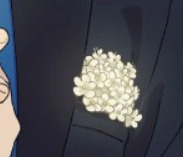

Yuno: Agave amica (Tuberose/チュベローズ) [tl by maristelina]


Fuuta: Iris tectorum (Roof iris/イチハツ) [tl by maristelina]


Muu: Rosa rugosa (Beach rose/ハマナス) [tl by maristelina]
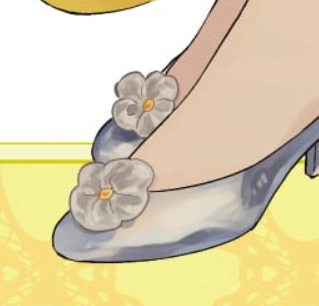

Shidou: Ageratum (Whiteweed/アゲラタム) [tl by maristelina]
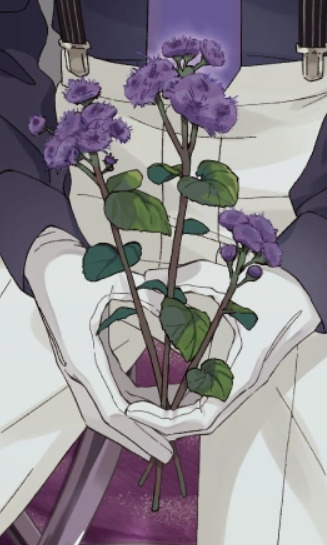

Mahiru: Capsella bursa-pastoris (Shepard's purse/ナズナ)


Kazui: Tradescantia ohiensis (Ohio spiderwort/ムラサキツユクサ)


Amane: Passiflora caerulea (Blue passion flower/トケイソウ)


Mikoto: Liriope muscari (Lily turf/ヤブラン)
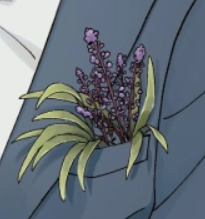

Kotoko: Monstera (モンステラ)


#milgram#ミルグラム#milgram translation#haruka sakurai#yuno kashiki#fuuta kajiyama#muu kusunoki#shidou kirisaki#mahiru shiina#kazui mukuhara#amane momose#mikoto kayano#kotoko yuzuriha
103 notes
·
View notes
Text

✦Iris tectorum Maxim✦
Remember me. Embrace me. Forgot me.
11 notes
·
View notes
Text


Siberian Iris. In the garden, we have several species of Iris: Bearded (the most hybridized species with hairy beard-like insides), Japanese (the water Iris, in and around the pond), Reticulata (the early spring bulb), Tectorum (wall or roof Iris, because the Japanese would grow them on their roofs), Pallida (variegated, with multicolored leaves) and Iris Siberica (Siberian Iris).
All Iris are so beautiful; they make the ideal subject for paintings, like those masterpieces by Van Gogh. They also are the perfect backdrop for photos like the one below of Aviva.
Without question, this one is my favorite. Its color is spectacular though solidly purple with just a speck of white and yellow inside. It is also the one that grows the best in our garden, which is a bit surprising since it is listed as all but extinct in the wild.
While some Iris are more structurally complicated than others, and Siberica may be the least complicated, Iris flowers commonly possess six petal-like structures: three sepals which are leaves that form the outer whorl of the flowers, three petals, and three broad stigma inside the flower to collect the pollen. Those that stand more or less vertically are called standards and the drooping ones are called falls. Because the flowers are so complex structurally, some garden writers have said you can actually watch Iris bloom if you are patient and without shpilkis, a trait my mother lamented I did not have.
The plants and the word are all about color. The iris, as you know, is also the colored part of the eye that surrounds the black pupil and regulates the amount of light that enters the eye. Animals in the wild all have the same species-specific eye color, though domesticated animals now can have different color eyes. Humans are unique in having genetically determined eyes with varied colored Iris.
The name Iris, of course, comes from the Greek for rainbow. It was also the name of the goddess of rainbows, who traveled on the rainbow bridge to give messages from the gods to the mortals below. To the Greeks, the flowers were like their namesake, and not just because they were so colorful. Iris didn’t just symbolize communication between the mortals and the divine; the flowers were messages from the gods about the beauty and wonder of nature, the means by which humans can commune with the gods. Even today, Iris flowers are placed on some graves, particular those of women, to shepherd them on their way to heaven.

Btw, an addendum to the last post about the Canadian Garlic. As you can see below, the flowers are now turning pink.
0 notes
Text
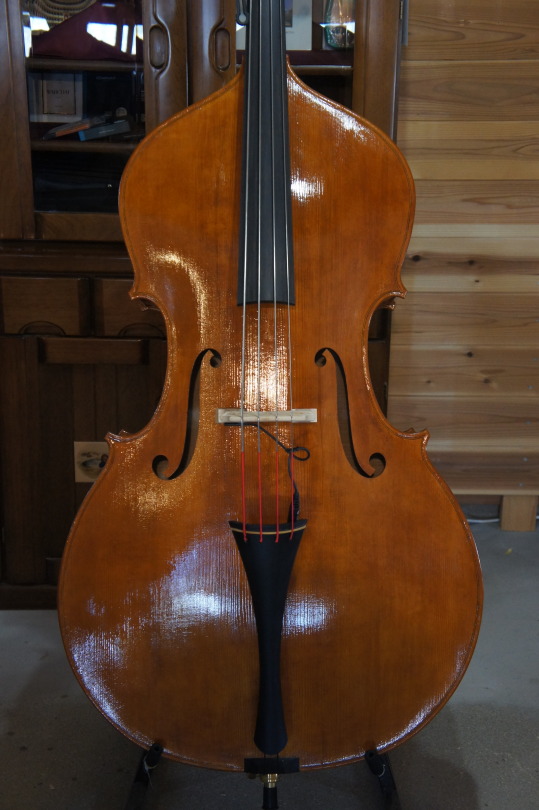

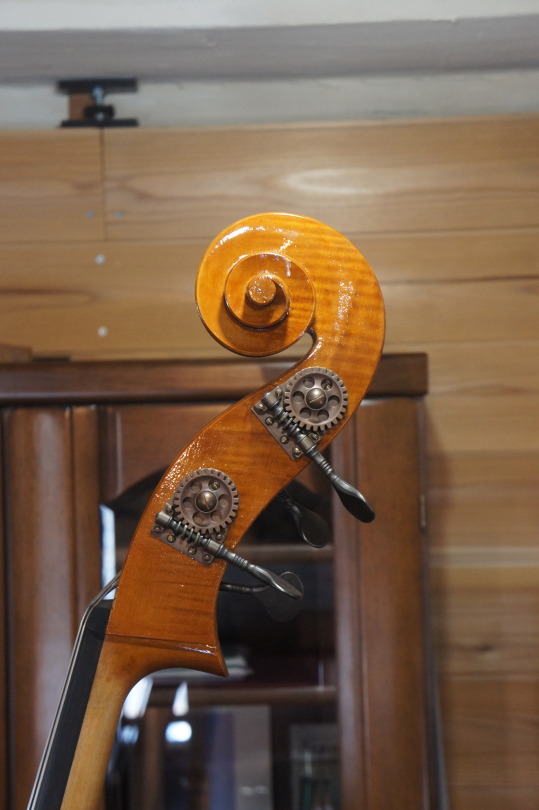
SOLD Contrabbasso 2022 “Iris tectorum”
round back model Rossi
oil varnished
jazzベーシストからのオーダーで、jazz用のセットアップで製作しました。
ご興味のある方、さらに質問がございましたら、メール、sns等でご連絡下さい。
1 note
·
View note
Text
Flowers' World⁴6!
Hello there! How about Brazil? Are you from Brazil? Can you share with us which flower is your national flower? And why is it so? Think about it then share your reply with all of us. As for Algeria’s national flower is represented by what: wer of Algeria is Iris Tectorum also known as Iris (scientific name). It belongs to Iridaceae family and sub family of Limniris …. more In case the…

View On WordPress
1 note
·
View note
Photo

Wall Iris
78 notes
·
View notes
Text




Minecraft beverage series?
Next time draw skeleton,slime and spider
Enderman = Iris tectorum
Creeper = Milk tea
Zombie = Matcha
59 notes
·
View notes
Photo

Blooming today, lovely iris tectorum. #irises #purple #blue #plants #gardening #plantgeek (at Los Angeles, California) https://www.instagram.com/p/B_Puog_g3qY/?igshid=3jesv98c6iqp
1 note
·
View note
Text
May Spring Shanghai | Iris tectorum 鸢尾

1 note
·
View note
Photo

Iris tectorum in the house!! #iris #garden #southerngardens #flowers #spring #purple (at Nashville, Tennessee) https://www.instagram.com/p/Cc0VnbSsXIc/?igshid=NGJjMDIxMWI=
0 notes
Text

Iris tectorum / Wall Iris at the Sarah P. Duke Gardens at Duke University in Durham, NC
#Iris tectorum#Iris#iridaceae#Wall Iris#Roof Iris#Plants#Flowers#Nature photography#photographers on tumblr#Sarah P. Duke Gardens#Duke Gardens#Duke University#Durham#Durham NC#North Carolina
2 notes
·
View notes
Photo

Essential Japanese Seasonal Decorations - Summer
Seasonality: Early Summer/ May
Japanese Name: Kodomo no Hi/ Tango no Sekku/ Shobu no Sekku/ Ayame no Hi/ Shobu
English Name: Children’s Day/ Beginning Horse Festival/ Iris Festival/ Day of the Iris/ Sweet Flag Iris
Children's Day (こどもの日, or Kodomo no Hi) is a Japanese national holiday which takes place annually on May 5, the fifth day of the fifth month, and is the final celebration in Golden Week. It is a day set aside to respect children's personalities and to celebrate their happiness. It was designated a national holiday by the Japanese government in 1948. It has been a day of celebration in Japan since ancient times.
Tango no Sekku (端午の節句) is one the five annual ceremonies that were traditionally held at the Japanese imperial court called Gosekku . It is the Japanese version of Double Fifth and was celebrated on the 5th day of the 5th moon in the lunar calendar or Chinese calendar. After Japan switched to the Gregorian calendar, the date was moved to May 5. Tan means "beginning" and go means "Horse", referring to the Chinese zodiac name for the fifth lunar month. Sekku means a seasonal festival. It marks the beginning of summer or the rainy season.
Shobu no Sekku (菖蒲の節句), also known as Ayame no Hi (菖蒲の節句), the festival of the irises (in the old Japanese calendar, the day would fall closer to the summer solstice than it does in the modern calendar). The iris flower or flag has long been used in purifying rituals on this day, by farmers, townspeople, and courtiers. At least as far back as the 12th century this was a day for gathering iris leaves and flowers for use in the bath, as an addition to food and drink, and in decorations on the roofs of houses and shops. The iris bath is still popular on this day in Japan. During the 12th or 13th century the word "shobu" came to be associated with its homonym meaning "military spirit", and people started celebrating by decorating paper samurai helmets with irises. Thus it became a day for boys, as the third day of the third month was a special day for girls, Hina matsuri. In the 18th and 19th centuries, boys would stage battles using iris leaves as swords. One military tradition that has evolved and persisted, though, is the setting up of a special display celebrating warrior values and Japanese heroes. It may have begun with a custom of making helmets out of iris leaves, which evolved into the crafting of beautiful lacquered display helmets for the day, along with painted banners and displays of real weapons.
Ayame (菖蒲), or Shobu, are types of irises that are said to give protection from evil spirits that were abroad on the fifth day of the fifth month. In the Imperial court, elegant decorations were made from the early-flowering Iris tectorum, but as the festival has evolved into Children’s Day, we are much more likely to see hana shobu on display. Their lower petals are larger and upper standards are much shorter than the slender ayame type of iris. Also, their sword-shaped leaves are narrow and ridged. Traditionally, boys bathe with iris leaves on this day, as the plant symbolizes the warrior spirit.
(Text Source 1)(Text Source 2)(Text Source 3)(Text Source 4)
DISCLAIMER: This is not a sponsored post from the source website nor am I selling these items through this tumblr account. This post is the result of my finding this item to adorable and/or beautiful to not include on this account. Thank you for your understanding.
#kimono#kodomonohi#kodomo no hi#kodomo#hi#kodomonohidecorations#tangonosekku#tango no sekku#tango#sekku#tangonosekkudecorations#shobunosekku#shobu no sekku#shobu#shobunosekkudecorations#ayamenohi#ayame no hi#ayame#ayamenohidecorations#earlysummer#earlysummerdecorations#maydecorations#seasonalphenomena#seasonalcelebrations#seasonaldecorations#seasonal#phenomena#decorations#celebrations
6 notes
·
View notes
Link
Description : Egrow 50Pcs/Bag Rare Iris Tectorum Seeds Iris Bonsai Flower Seeds Heirloom Iris Tectorum Seeds Specifications : Quantity : 50 pcs Germination time : 15-25 days For germination ...
0 notes
Photo

Every year when I see my Irises bloom I think of this little bit by EB White. Hope we don’t need WW3 to come to this place.💚 "A Dream: After the 3rd World Was was over there was no more than a handful of people left alive, & the earth was in ruins. The survivors decided to meet to talk over their problems & to make lasting peace. There were 83 countries & each country sent a delegate to the convention. Each delgate brought the flag of his homeland, except the delegate of China. He produced a shoe box, from which he drew a living flower." "That," he said, "is a wild flag (Iris Tectorum). In China we have decided to adopt this flag, since it is a convenient & universal device & a very beautiful and grows everywhere in the moist places of the earth for all to observe & wonder at. I propose all countries adopt it, so that it will be impossible for us to insult each others flag...." E. B. White, The New Yorker, December 25, 1943 #iris #ebwhite #maine #worldpeace #injoyemporium #irisesofinstagram #flagiris #irisflag https://www.instagram.com/p/BzEZYQHAk9T/?igshid=1uw4ebw0mhsaa
0 notes